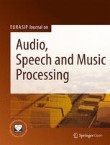Determination of Nonprototypical Valence and Arousal in Popular Music: Features and Performances
Mood of Music is among the most relevant and commercially promising, yet challenging attributes for retrieval in large music collections. In this respect this article first provides a short overview on methods...
